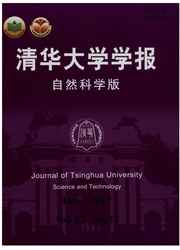

 中文摘要:
中文摘要:
为掌握华北平原麦田总土壤呼吸、异养呼吸和自养呼吸的日内变化规律及其控制因素,该文于2011年4月—6月开展了土壤呼吸实验,采用根系排除法,测得总土壤呼吸及其2个分量异养呼吸和自养呼吸。结果表明:总土壤呼吸和异养呼吸呈现单峰变化规律,峰值出现在午后14:00附近,自养呼吸无明显日内变化特征。自养呼吸对总土壤呼吸的贡献率在日时间尺度上变化较小,但不同生育期的量值有微小差异。相关关系分析结果表明:异养呼吸与空气温度具有很好相关性,好于与土壤温度的相关性,异养呼吸与空气相对湿度具有较好的负相关性。自养呼吸主要受光合作用速率控制,但在时间上滞后于光合作用速率。因此控制该地区麦田土壤呼吸日内变化的主要因素为空气温度、空气湿度和光合作用速率。
 英文摘要:
英文摘要:
Soil respiration in a typical wheat cropland was measured from April to June, 2011 to understand the diel variations of the total soil respiration, heterotrophic respiration, autotrophic respiration, and their corresponding controlling factors in wheat croplands in the North China Plain. The root exclusion method was used to measure total soil respiration, heterotrophic respiration and autotrophic respiration. The results showed that the total soil respiration and the heterotrophic respiration both had single peaks at around 14:00, while the autotrophic respiration did not have apparent diel characteristics. The ratio of autotrophic respiration to the total soil respiration varied little throughout the day but varied some during different growth stages. The heterotrophic respiration was more closely related to the air temperature than to the soil temperature. In addition, the heterotrophic respiration was negatively correlated to the relative humidity. The autotrophic respiration was dependent on the gross primary production with a time lag. In summary, the diel variations of soil respiration in a field were mainly dependent on the air temperature, relative humidity and photosynthesis rate.
 同期刊论文项目
同期刊论文项目
 同项目期刊论文
同项目期刊论文
 Combining the Crop Coefficient of Winter Wheat and Summer Maize with a Remotely Sensed Vegetation In
Combining the Crop Coefficient of Winter Wheat and Summer Maize with a Remotely Sensed Vegetation In Characterizing Spatiotemporal Variations of Hourly Rainfall by Gauge and Radar in the Mountainous Th
Characterizing Spatiotemporal Variations of Hourly Rainfall by Gauge and Radar in the Mountainous Th Identifying effective forecast horizon for real-time reservoir operation under a limited inflow fore
Identifying effective forecast horizon for real-time reservoir operation under a limited inflow fore Calibration of a distributed flood forecasting model with input uncertainty using a Bayesian framewo
Calibration of a distributed flood forecasting model with input uncertainty using a Bayesian framewo Long-term variability of the carbon balance in a large irrigated area along the lower Yellow River f
Long-term variability of the carbon balance in a large irrigated area along the lower Yellow River f Sensitivity of global terrestrial gross primary production to hydrologic states simulated by the Com
Sensitivity of global terrestrial gross primary production to hydrologic states simulated by the Com Multi-scale evaluation of high-resolution multi-sensor blended global precipitation products over th
Multi-scale evaluation of high-resolution multi-sensor blended global precipitation products over th Impacts of climate change and vegetation dynamics on runoff in the mountainous region of the Haihe R
Impacts of climate change and vegetation dynamics on runoff in the mountainous region of the Haihe R Attribution analysis based on the Budyko hypothesis for detecting the dominant cause of runoff decli
Attribution analysis based on the Budyko hypothesis for detecting the dominant cause of runoff decli Calculating actual crop evapotranspiration under soil water stress conditions with appropriate numer
Calculating actual crop evapotranspiration under soil water stress conditions with appropriate numer Remote sensing temporal and spatial patterns of evapotranspiration and the responses to water manage
Remote sensing temporal and spatial patterns of evapotranspiration and the responses to water manage Estimation of evapotranspiration using a remote sensing model over agricultural land in the North Ch
Estimation of evapotranspiration using a remote sensing model over agricultural land in the North Ch Impact of Urbanization on Rainfall-Runoff Process in a City: the Flood from 8 to 9 August 2007 in Xi
Impact of Urbanization on Rainfall-Runoff Process in a City: the Flood from 8 to 9 August 2007 in Xi Development of a soil-plant-atmosphere continuum model (HDS-SPAC) based on hybrid dual-source approa
Development of a soil-plant-atmosphere continuum model (HDS-SPAC) based on hybrid dual-source approa Temporal Downscaling of Crop Coefficient and Crop Water Requirement from Growing Stage to Substage S
Temporal Downscaling of Crop Coefficient and Crop Water Requirement from Growing Stage to Substage S Detecting the effect of land-use change on streamflow, sediment and nutrient losses by distributed h
Detecting the effect of land-use change on streamflow, sediment and nutrient losses by distributed h Interannual and seasonal variability in evapotranspiration and energy partitioning over an irrigated
Interannual and seasonal variability in evapotranspiration and energy partitioning over an irrigated Assessing the impacts of climate variability and human activities on annual runoff in the Luan River
Assessing the impacts of climate variability and human activities on annual runoff in the Luan River Analysis of the Diurnal Pattern of Evaporative Fraction and Its Controlling Factors over Croplands i
Analysis of the Diurnal Pattern of Evaporative Fraction and Its Controlling Factors over Croplands i Temporal variation of over-bank flooding of Wei River and its impact on a riparian wetland in Xi'an,
Temporal variation of over-bank flooding of Wei River and its impact on a riparian wetland in Xi'an, Effects of climate variability and land-use change on stormwater runoff in Xi'an, China for the past
Effects of climate variability and land-use change on stormwater runoff in Xi'an, China for the past Combining crop coefficient of winter wheat and summer maize with remotely-sensed vegetation index fo
Combining crop coefficient of winter wheat and summer maize with remotely-sensed vegetation index fo The role of run-on for overland flow and the characteristics of runoff generation in the Loess Plate
The role of run-on for overland flow and the characteristics of runoff generation in the Loess Plate Salinity dynamics of wetland ditches receiving drainage from irrigated agricultural land in arid and
Salinity dynamics of wetland ditches receiving drainage from irrigated agricultural land in arid and Coupling land surface and crop growth models for predicting evapotranspiration and carbon exchange i
Coupling land surface and crop growth models for predicting evapotranspiration and carbon exchange i Estimating epistemic and aleatory uncertainties during hydrologic modeling: An information theoretic
Estimating epistemic and aleatory uncertainties during hydrologic modeling: An information theoretic 期刊信息
期刊信息
